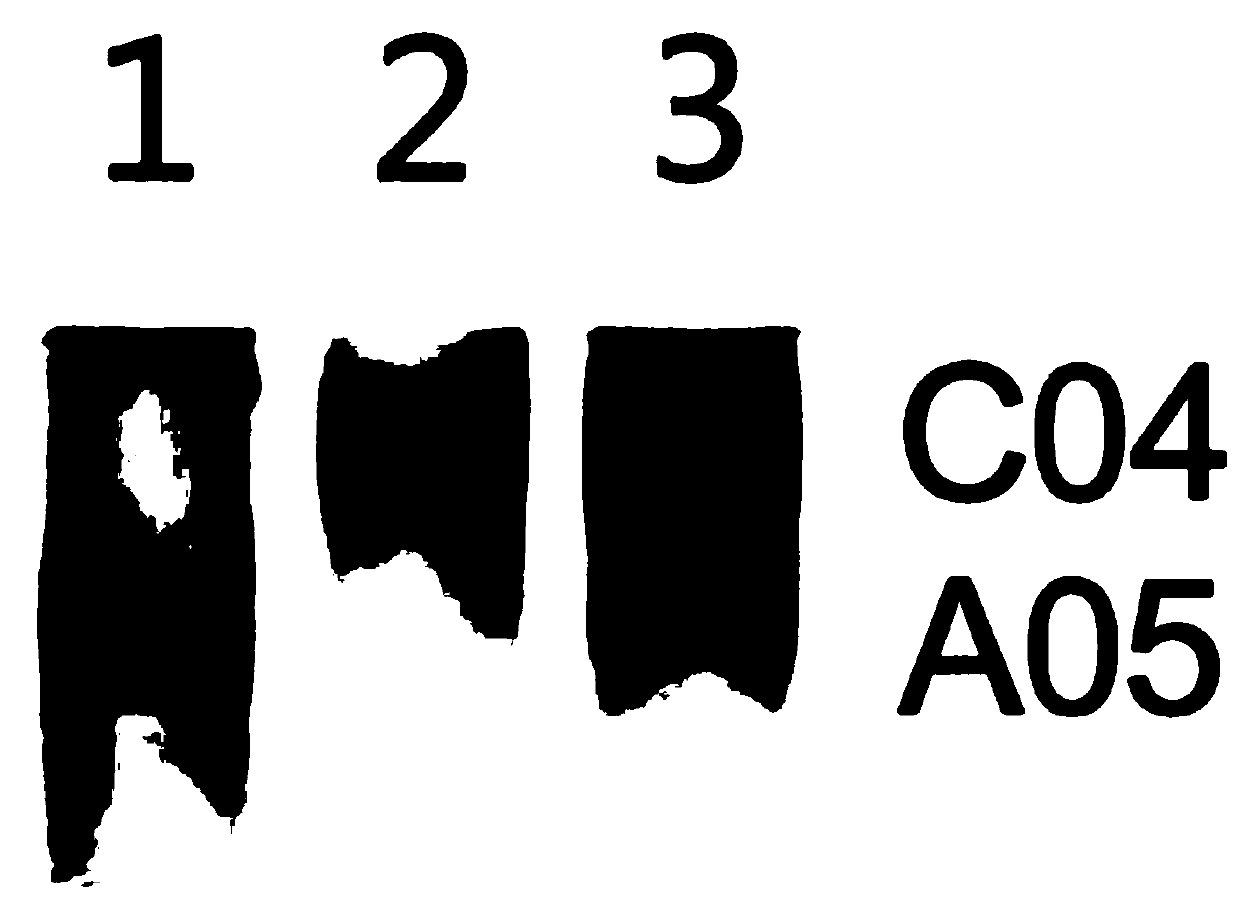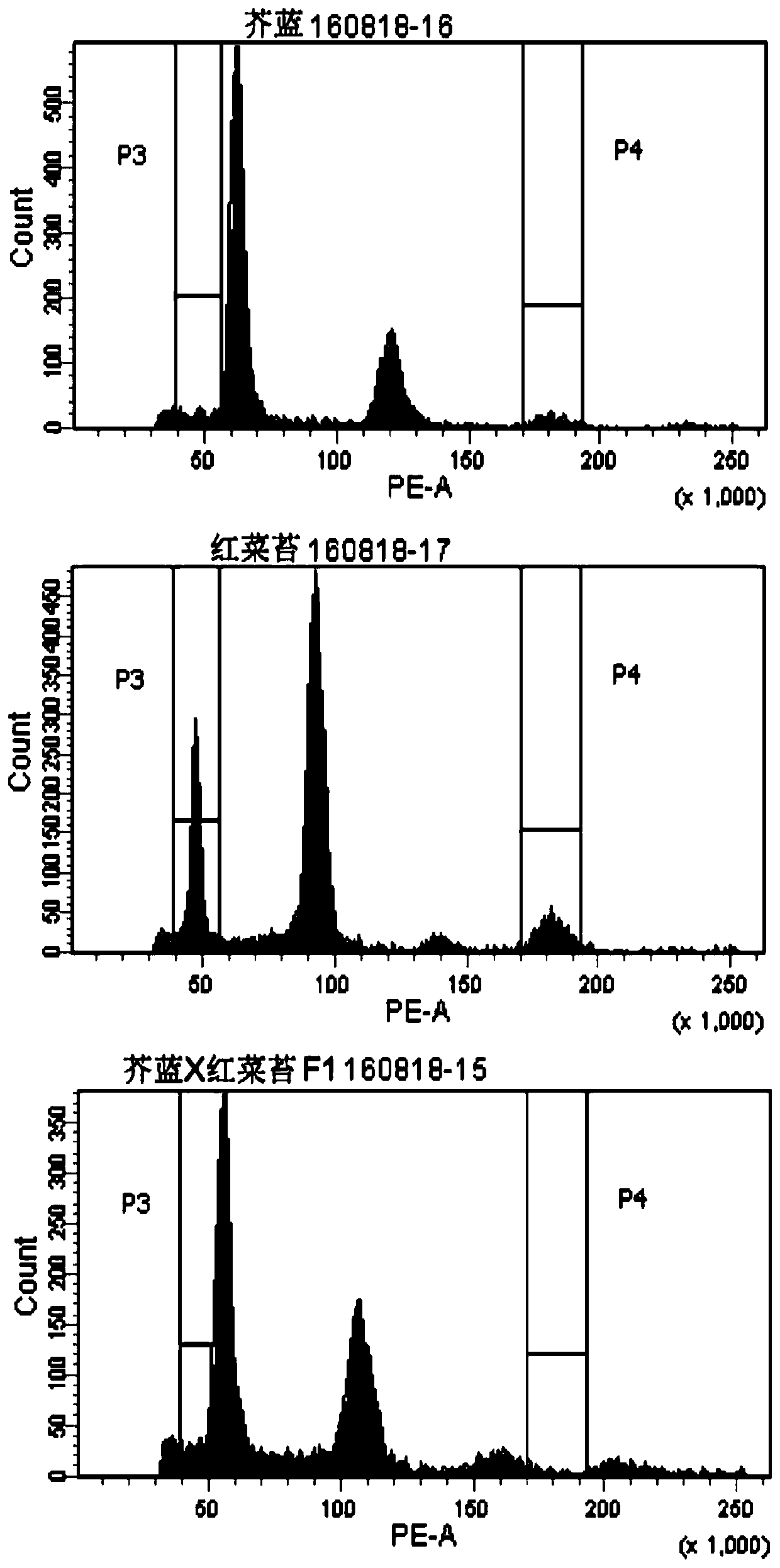Molecular markers for identification of interspecific hybrids of Chinese kale and red brassica campestris and tracing of chromosome segregation conditions of progeny materials A05 and C04 of interspecific hybrids
A technology of molecular markers and chromosomes, applied in the field of genetic breeding, can solve the problems of time-consuming and laborious, and achieve the effect of simple and fast cost, simple operation, and rich vegetable types
- Summary
- Abstract
- Description
- Claims
- Application Information
AI Technical Summary
Problems solved by technology
Method used
Image
Examples
Embodiment 1
[0042] Example 1 This example identifies the hybrid F between Chinese kale and red cabbage 1 Plant
[0043] 1.1 Extract F to be detected 1 Genomic DNA of the plant and its parents.
[0044] 1.2 Synthetic primers:
[0045] C04a-F: 5'-TCCGGAACTCATGAATGCTT-3' (SEQ ID No. 1);
[0046] C04a-R: 5'-TTTTGGGTGCCTCGTGTAAT-3' (SEQ ID No. 2).
[0047] 1.3 PCR amplification. To be tested F 1 The plant and its parental DNA are used as templates, and the above primers are used for PCR amplification reactions. The reaction system is 10μL, including: 1×PCR Buffer (containing Mg + ), 0.5ng template DNA, 0.2mM dNTPs, 0.5μM primer C04a-F, 0.5μM primer C04a-R, 1U Taq enzyme. PCR reaction conditions: 94℃3min; 94℃30s, 55.8℃30S, 72℃30S, 35 cycles; 72℃10min.
[0048] 1.4 The above PCR products were detected by polyacrylamide gel electrophoresis. Configure 8% polypropylene gel, electrophoresis at 180 volts for 1.5 hours, until bromophenol blue runs out of the bottom of the electrophoresis tank to end electrop...
Embodiment 2
[0055] Example 2 In this example, the backcross progeny of interspecific hybrids between Chinese kale and red cabbage (BC 1 )material
[0056] 1.1 Extract the genomic DNA of the plant to be tested and its parents.
[0057] Synthesis primer:
[0058] C04a-F: 5'-TCCGGAACTCATGAATGCTT-3' (SEQ ID No. 1);
[0059] C04a-R: 5'-TTTTGGGTGCCTCGTGTAAT-3' (SEQ ID No. 2).
[0060] 1.3 PCR amplification. Using the DNA of the plant to be tested and its parental DNA as a template, the PCR amplification reaction is carried out with the above primers. The reaction system is 20μL, including: 1×PCR Buffer (containing Mg + ), 1ng template DNA, 0.2mM dNTPs, 0.5μM primer C04a-F, 0.5μM primer C04a-R, 1U Taq enzyme. PCR reaction conditions: 95℃3min; 95℃30s, 55.8℃30S, 72℃30S, 35 cycles; 72℃5min.
[0061] 1.4 The above PCR products were detected by polyacrylamide gel electrophoresis. Configure 8% polypropylene gel, electrophoresis at 180 volts for 2 hours, until bromophenol blue runs out of the bottom of the el...
PUM
 Login to View More
Login to View More Abstract
Description
Claims
Application Information
 Login to View More
Login to View More - R&D
- Intellectual Property
- Life Sciences
- Materials
- Tech Scout
- Unparalleled Data Quality
- Higher Quality Content
- 60% Fewer Hallucinations
Browse by: Latest US Patents, China's latest patents, Technical Efficacy Thesaurus, Application Domain, Technology Topic, Popular Technical Reports.
© 2025 PatSnap. All rights reserved.Legal|Privacy policy|Modern Slavery Act Transparency Statement|Sitemap|About US| Contact US: help@patsnap.com



